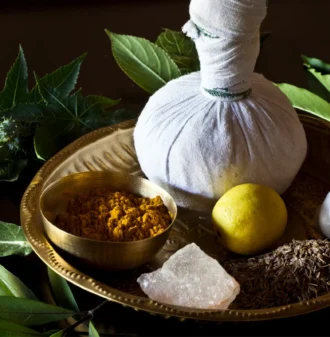Classical Panchakarma
Panchakarma is a traditional Ayurvedic therapy that involves a series of detoxification and rejuvenation treatments aimed at balancing the body, mind, and spirit. “Pancha” means “five” and “karma” means “action” in Sanskrit, so Panchakarma refers to five actions or procedures that help eliminate toxins and restore balance in the body.
The classical Panchakarma therapy consists of the following five main procedures:
- Vamana (Therapeutic Emesis): Vamana involves controlled vomiting to eliminate excessive phlegm and toxins from the upper respiratory tract and stomach. This procedure is primarily used to treat Kapha dosha-related disorders such as asthma, allergies, and congestion.
- Virechana (Therapeutic Purgation): Virechana is a cleansing procedure that aims to remove toxins from the small intestine and liver. It involves the administration of herbal purgatives to induce controlled bowel movements. Virechana is commonly used to treat Pitta dosha-related conditions like liver disorders, skin diseases, and digestive issues.
- Basti (Medicated Enema): Basti involves the administration of herbal oils, decoctions, and medicated substances through the rectum. This procedure helps eliminate toxins and balance Vata dosha. Basti is often used to treat conditions
- Nasya (Nasal Administration): Application of medicated oils or herbal preparations through the nostrils to cleanse the nasal passages and treat various conditions.
- Rakta Moksha (Bloodletting): Controlled removal of a small amount of blood to remove toxins and improve circulation.





